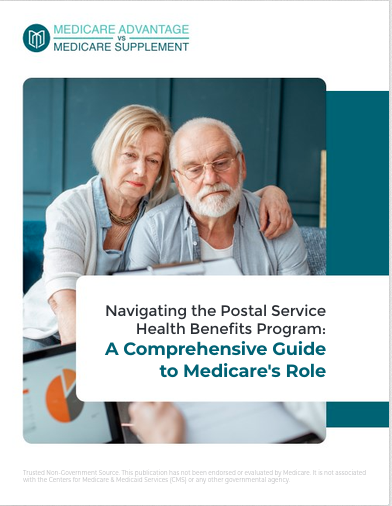Key Takeaways:
- Medicare eligibility differs for retirees and non-retirees based on employment status and health coverage.
- Special Enrollment Periods (SEPs) allow flexible Medicare enrollment for those with changing employment conditions.
Learn How Medicare Eligibility Differs for Retirees and Non-Retirees
Medicare is a crucial healthcare program for millions of Americans aged 65 and older, as well as certain younger individuals with disabilities. However, Medicare eligibility and enrollment can differ significantly for retirees and those who are still working. Understanding these differences is essential for ensuring you have the right coverage at the right time. This article explores Medicare enrollment for retirees and non-retirees, the impact of employer health coverage, and Special Enrollment Periods (SEPs) that provide flexibility in enrollment.
Medicare Enrollment for Retirees: Key Considerations
When you retire, enrolling in Medicare is a key step to ensuring you have adequate healthcare coverage. Here are some important considerations for retirees:
Initial Enrollment Period (IEP)
The Initial Enrollment Period (IEP) is the first opportunity for most individuals to sign up for Medicare. It begins three months before you turn 65, includes the month of your 65th birthday, and ends three months after. During this seven-month period, you can enroll in Medicare Parts A and B. It is crucial to sign up during your IEP to avoid late enrollment penalties and gaps in coverage.
Automatic Enrollment
If you are already receiving Social Security or Railroad Retirement Board benefits when you turn 65, you will be automatically enrolled in Medicare Parts A and B. You will receive your Medicare card in the mail about three months before your 65th birthday. If you do not wish to keep Part B, which requires a premium, you must follow the instructions provided to opt out.
Transitioning from Employer-Sponsored Insurance
As a retiree, you may have been covered by employer-sponsored health insurance. Upon retirement, this coverage may end, and transitioning to Medicare becomes necessary. It’s important to coordinate the end of your employer coverage with the start of your Medicare coverage to ensure continuous health insurance.
Understanding Medicare Parts
- Part A (Hospital Insurance): Generally premium-free if you or your spouse have worked and paid Medicare taxes for at least 10 years.
- Part B (Medical Insurance): Requires a monthly premium, covering outpatient services, doctor visits, and preventive care.
- Part C (Medicare Advantage): An alternative to Original Medicare, offered by private insurers, including additional benefits.
- Part D (Prescription Drug Coverage): Optional coverage for prescription drugs, available through private insurers.
Medicare Eligibility for Working Individuals
If you are still working at 65, your Medicare eligibility and enrollment process may differ based on your employment status and the health coverage provided by your employer.
Delaying Part B Enrollment
If you are employed and have health insurance through your employer or your spouse’s employer, you may choose to delay enrolling in Medicare Part B without incurring a late enrollment penalty. This option is available as long as the employer providing the coverage has 20 or more employees. In this case, you can enroll in Part B later, typically during a Special Enrollment Period (SEP).
Coordination of Benefits
For individuals who continue working past 65 and have employer-sponsored insurance, Medicare can coordinate benefits with your employer’s plan. Generally, the employer’s plan pays first, and Medicare pays second. This coordination helps cover costs that the primary insurance does not fully pay.
Special Enrollment Period (SEP) for Working Individuals
When you decide to retire or lose employer-sponsored coverage, you become eligible for a Special Enrollment Period (SEP). During this SEP, you can enroll in Medicare Part B without facing a late enrollment penalty. The SEP lasts for eight months, starting from the month after your employment ends or your employer coverage ends, whichever comes first.
Impact of Employer Health Coverage on Medicare Enrollment
Employer health coverage significantly impacts Medicare enrollment decisions for both retirees and non-retirees. Here’s how employer coverage interacts with Medicare:
Employer Coverage as Primary Insurance
If you are still working and covered by an employer’s health plan, the employer plan typically serves as your primary insurance. Medicare acts as secondary insurance, covering costs not paid by the primary insurance. This coordination reduces out-of-pocket expenses and ensures comprehensive coverage.
Small vs. Large Employer Coverage
The size of your employer matters in Medicare coordination. If your employer has fewer than 20 employees, Medicare generally becomes the primary payer, and the employer plan is secondary. Conversely, for employers with 20 or more employees, the employer plan is primary, and Medicare is secondary. Understanding this distinction is crucial for making informed enrollment decisions.
Retiree Health Benefits
Some employers offer retiree health benefits that complement Medicare. These benefits can help cover costs not included in Medicare, such as prescription drugs, dental, and vision care. It is essential to understand how your retiree benefits work with Medicare to optimize your coverage.
COBRA Coverage
If you lose employer-sponsored health coverage, you might be eligible for COBRA continuation coverage. However, COBRA is not considered creditable coverage for delaying Medicare Part B enrollment. If you rely on COBRA instead of enrolling in Medicare when first eligible, you could face late enrollment penalties and a gap in coverage once COBRA ends.
Special Enrollment Periods for Retirees and Non-Retirees
Special Enrollment Periods (SEPs) provide flexibility in Medicare enrollment for individuals with changing employment or health coverage conditions. Understanding SEPs helps you avoid penalties and ensure continuous coverage.
SEP for Loss of Employer Coverage
As mentioned earlier, if you lose your employer-sponsored coverage, you have an eight-month SEP to enroll in Medicare Part B without penalty. This SEP ensures you can transition to Medicare seamlessly after leaving employment or losing coverage.
SEP for Moving Out of Plan’s Service Area
If you move out of your Medicare Advantage plan’s service area, you qualify for an SEP to switch plans or return to Original Medicare. This flexibility ensures you maintain coverage tailored to your new location.
SEP for Medicaid Eligibility Changes
If you gain or lose eligibility for Medicaid, you qualify for an SEP to make changes to your Medicare Advantage or Part D plan. This SEP helps align your Medicare coverage with your new Medicaid status.
SEP for Other Special Circumstances
Other special circumstances, such as changes in your plan’s contract with Medicare, can also trigger an SEP. These periods allow you to adjust your coverage in response to changes beyond your control, ensuring you always have the best possible coverage.
Conclusion: Navigating Medicare Eligibility for Retirees and Non-Retirees
Understanding how Medicare eligibility and enrollment differ for retirees and non-retirees is crucial for ensuring you have the appropriate healthcare coverage. Retirees must navigate transitioning from employer-sponsored insurance to Medicare, while working individuals need to understand how employer coverage interacts with Medicare and the importance of SEPs. By staying informed about these differences and the options available, you can make well-informed decisions that optimize your healthcare coverage and avoid penalties.
Contact Information:
Email: [email protected]
Phone: 3365550123










